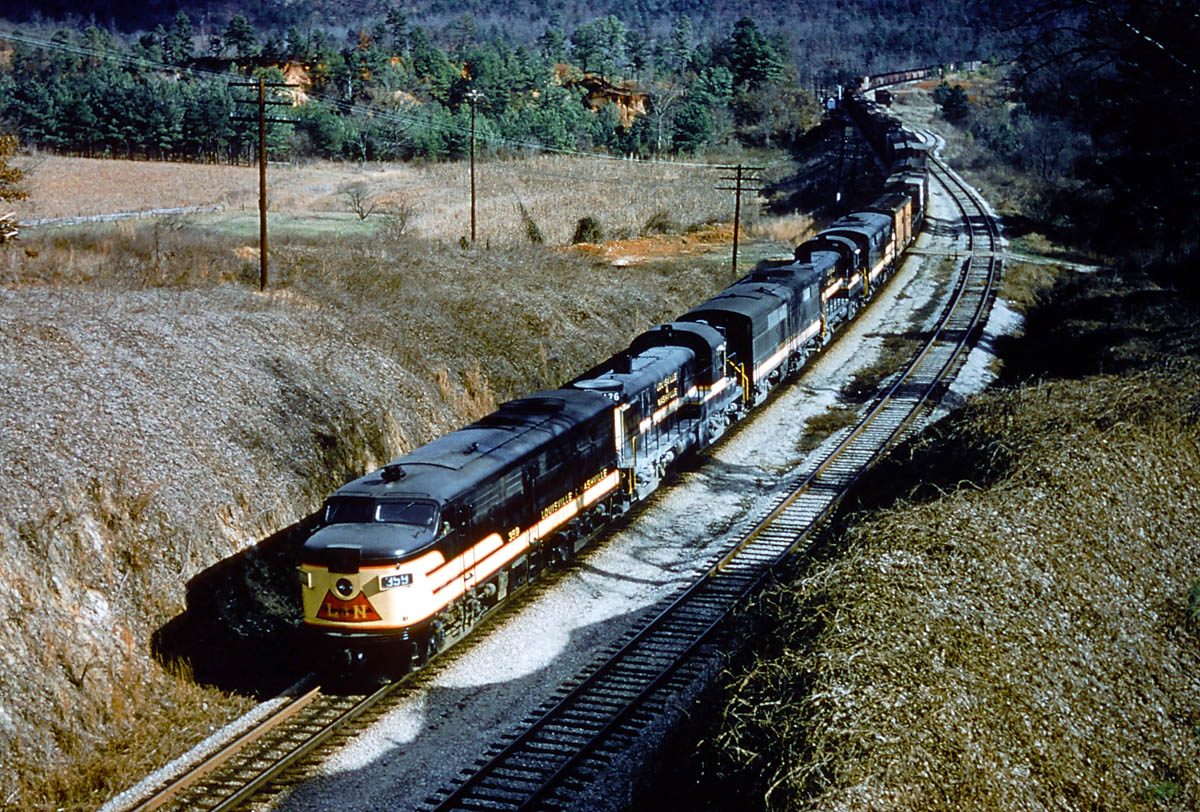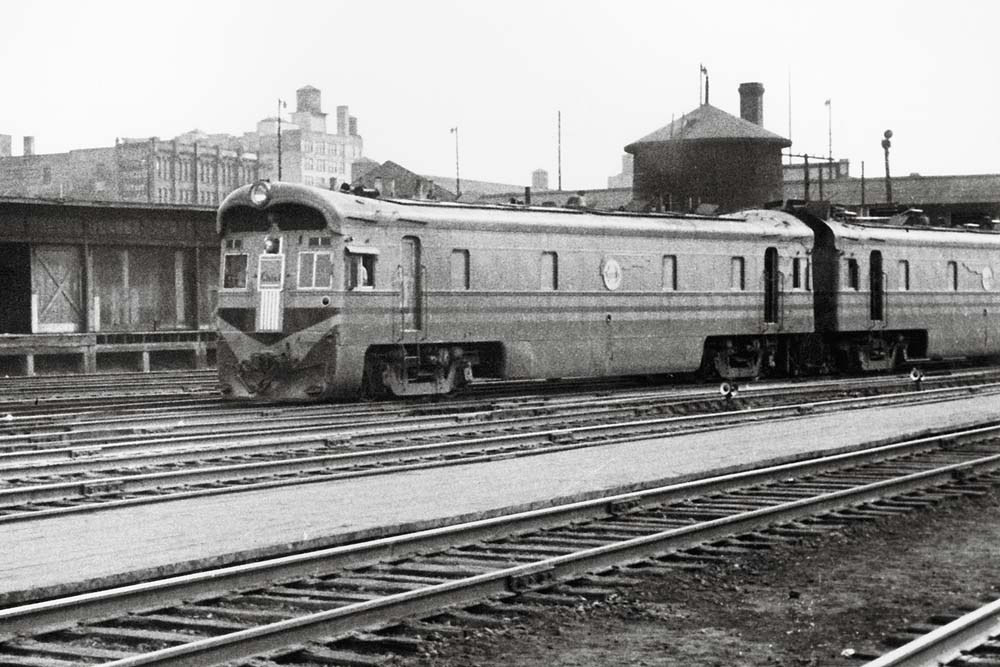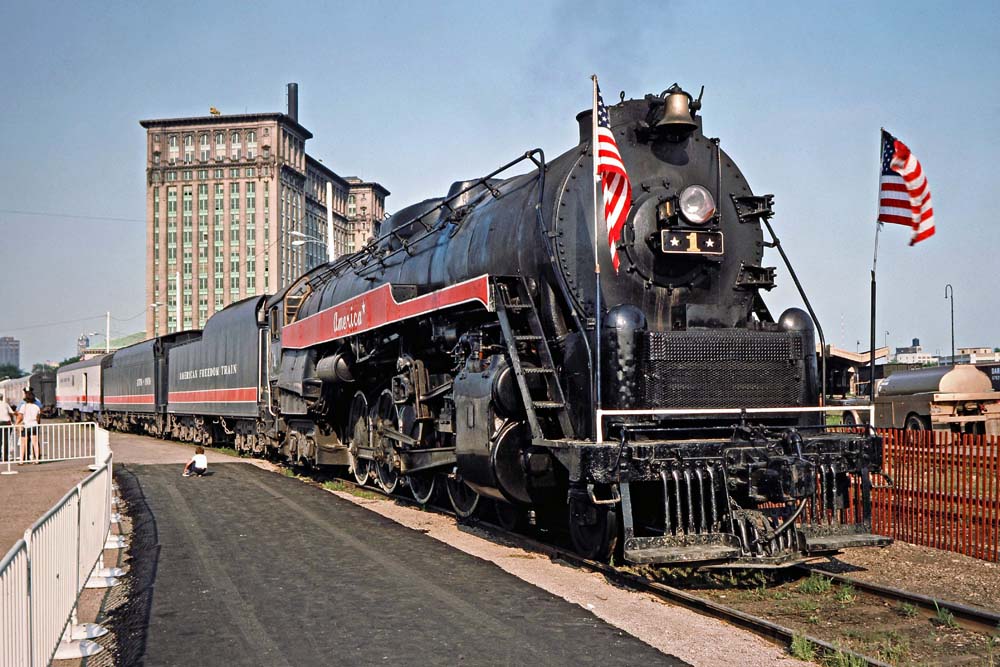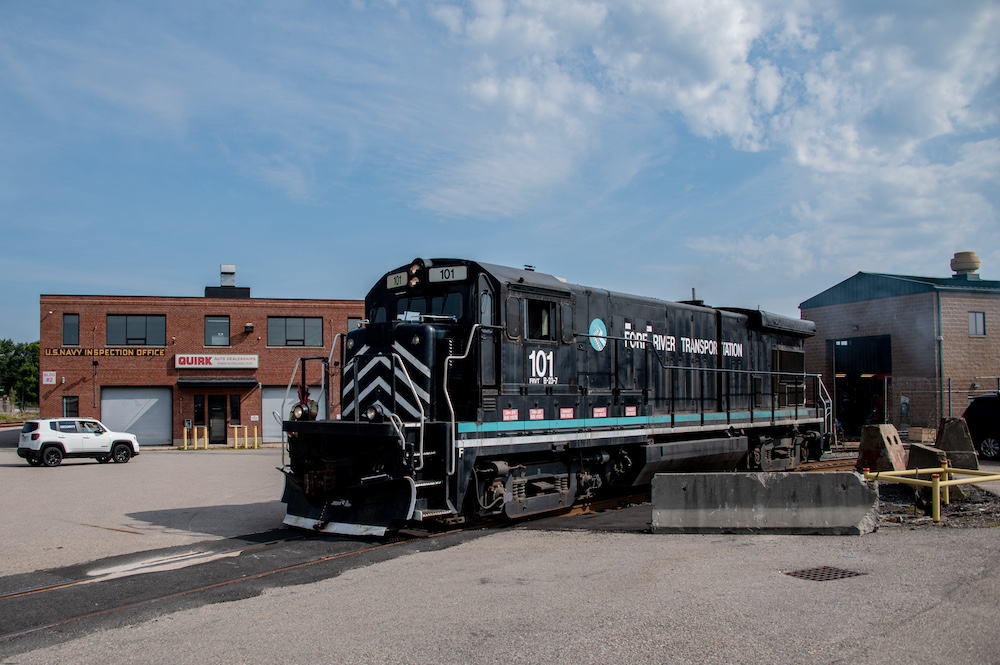A The diesel locomotives that replaced steam on the Louisville & Nashville’s lines in eastern Kentucky were predominantly Alco units. The L&N owned a large fleet of RS3s, FA2s, and a few FB2s, so it’s a certainty that you saw the RS3s as they rolled by in southeastern Kentucky. As built, they were painted in an attractive black-and-cream livery, with orange trim, yellow-gold lettering, and safety stripes, and a variation of the company’s traditional herald on both noses in red, yellow-gold, and black. This scheme was designed by EMD’s styling section and first appeared on an order of 16 E6s in 1942 – the company’s first diesel-electric road units. Except for a quintet of all-black F3s acquired primarily for pusher service on the Eastern Kentucky Division in 1948, all subsequent road units were painted in this scheme until 1958 (although dark blue was the primary color for E units and black for everything else). Switchers were just black with yellow-gold lettering. In that year the L&N adopted an “austerity” scheme of all-black for freight, and all-blue for passenger. It was an era when many railroads began using simpler locomotive paint liveries to save money, shorten out-of-service time in the paint shop, and take advantage of more durable enamel paint versus the faster-drying, but fade-prone, lacquers for the complicated multi-color schemes. Around 1962 or 1963, the company adopted the first of several variations of the more familiar gray and yellow that lasted until the Family Lines scheme of 1977. – Ron Flanary, L&N historian, author
Kentucky diesel paint schemes
| Last updated on November 3, 2020
Ask Trains from the October 2015 issue















I wish UP would just go back to putting the railroad’s name on the sides of the locomotives. That flag is just too much. Fly the flag on the locos instead.
interesting, like Frisco had red/silver engines for passenger trains and blk/yellow for freights. After they stopped running passenger trains, it seems like all engines became red/wht.
Perhaps there is enough colour schemes and information to put a book together on the subject. Some railroads had a variety of schemes and it would be interesting to follow the transitions of these as well.
My favorite paint scheme was the Delaware & Hudson the Bridge Line, blue silver with a yellow stripe and the gold shield with their logo ,looked real good on their PA,s and shark nose units not forgetting their Alco,s Rs 3,s
each railroad had their own paint schemes. UP’s is a classic they are known as the Armor Yellow Harbor Mist Gray and everything is numbered with red letters. UP use to have speed lettering on the hoods but this is only done on switchers and all EMD’s and GE engines have Flags on the side.
Paint schemes seemed to really come alive with the introduction of diesel locomotives. It seems to have really helped a lot of train lines develop their identity.